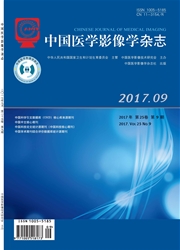

 中文摘要:
中文摘要:
目的通过分析抑郁症患者后扣带回内部区域的有效连接,探讨抑郁症患者后扣带回功能异常的机制及其与抑郁症临床特征的关系。资料与方法采用光谱动态因果模型(spDCM),对23例重度抑郁症患者和36例正常对照的后扣带回内部区域BA23、BA29、BA30和BA31分别进行静息态下功能磁共振成像(fMRI)数据的有效连接分析。结果两组BA30自连接的连接强度值差异有统计学意义(t=2.53,P〈0.05)。抑郁症组BA23对BA31存在异常激活,BA30对BA23存在异常抑制;与正常对照组比较,抑郁症组BA23、BA30的自连接以及BA23与BA29、BA29与BA31、BA30与BA31双向连接和BA23到BA31、BA30到BA23、BA30到BA29单向连接在进行a〈0.05 Hz参数值校正后存在差异。结论抑郁症患者后扣带回内部区域间存在有效连接环路节点和连接异常。
 英文摘要:
英文摘要:
Purpose To explore the role of posterior cingulate cortex(PCC) dysfunction in the pathogenesis of depression and its relationship with the clinical features of depression by analyzing the effective connection among the inner areas of PCC of patients in depression. Materials and Methods The spectral dynamic causal model(spDCM) was used to analyze the resting state functional magnetic resonance imaging(fMRI) data from the PCC inner areas Brodmann area(BA) 23, BA29, BA30, BA31 in the major depressive disorder group(MDD, n=23) and healthy control group(HC, n=36). Results Compared with HC group, the strength of BA30 self-connection of MDD group existed significant difference(t=2.53, P〈0.05). In MDD group, the connection of BA23 toward BA31 had abnormal activation, and the abnormal inhibition occurred in BA23 toward BA30; compared with HC group and after a〈0.05 Hz correction, there were significant differences in the bi-directional connections for BA23 and BA31, BA39 and BA31, BA30 and BA31, and in the unidirectional connections for BA23 to BA31, BA30 to BA23, BA30 to BA29 in MDD group. Conclusion The effective connection and connective nodes and edges in the inner areas of PCC in the depression disorder patients were abnormal.
 同期刊论文项目
同期刊论文项目
 同项目期刊论文
同项目期刊论文
 期刊信息
期刊信息
